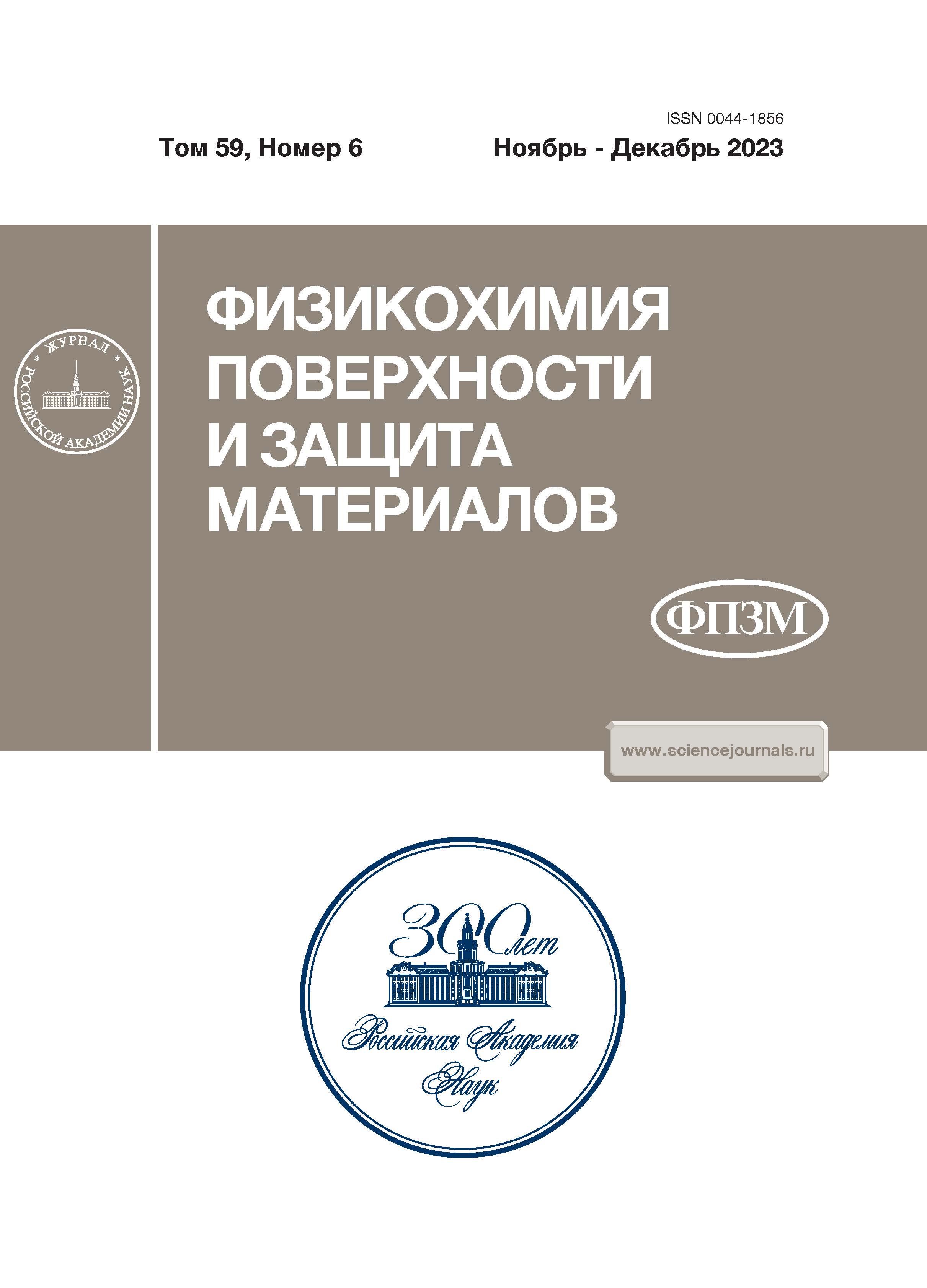Studying the Composition of Cluster Ions by Matrix- and Surface-Activated Laser Desorption/Ionization in Samples Obtained from Solutions of Sodium Stannate and Tin(II) Chloride
- Autores: Sukhorukov D.O.1, Pytskii I.S.1, Buryak A.K.1, Revel’skii A.I.2, Revel’skii I.A.2
-
Afiliações:
- Frumkin Institute of Physical Chemistry and Electrochemistry, Russian Academy of Sciences
- Faculty of Chemistry, Moscow State University
- Edição: Volume 59, Nº 6 (2023)
- Páginas: 612-620
- Seção: МЕТОДЫ ИЗУЧЕНИЯ ФИЗИКО-ХИМИЧЕСКИХ СИСТЕМ
- URL: https://cardiosomatics.ru/0044-1856/article/view/663947
- DOI: https://doi.org/10.31857/S0044185623700766
- EDN: https://elibrary.ru/GHYFAZ
- ID: 663947
Citar
Texto integral
Resumo
The purpose of this work was to study the composition of cluster ions in samples containing sodium stannate and tin(II) chloride. It has been shown that the composition of mass spectra is influenced by such parameters as the laser radiation energy and the substance content in the sample being studied. Conditions for preparing samples and recording mass spectra using these parameters were optimized. Presumptive identification of peaks in the recorded mass spectra was carried out. It has been shown that many of the ion peaks observed in the mass spectra may correspond to clusters containing tin. In the mass spectra of sodium stannate, ions of the general composition SnxOyNazHm were detected, in which the number of tin atoms reaches eight, and the maximum ion mass-to-charge ratio (m/z) is 1100. In the mass spectra of tin(II) chloride, there are ions of the general composition SnxOyHmClp and SnxCly, where the number of tin atoms reaches 4, and the highest m/z value is 1000.
Palavras-chave
Sobre autores
D. Sukhorukov
Frumkin Institute of Physical Chemistry and Electrochemistry, Russian Academy of Sciences
Email: suhorukov1010@mail.ru
119071, Moscow, Russia
I. Pytskii
Frumkin Institute of Physical Chemistry and Electrochemistry, Russian Academy of Sciences
Email: suhorukov1010@mail.ru
119071, Moscow, Russia
A. Buryak
Frumkin Institute of Physical Chemistry and Electrochemistry, Russian Academy of Sciences
Email: suhorukov1010@mail.ru
119071, Moscow, Russia
A. Revel’skii
Faculty of Chemistry, Moscow State University
Email: suhorukov1010@mail.ru
119991, Moscow, Russia
I. Revel’skii
Faculty of Chemistry, Moscow State University
Autor responsável pela correspondência
Email: suhorukov1010@mail.ru
119991, Moscow, Russia
Bibliografia
- Уайтсайдс Дж., Эйглер Д., Андерс Р. Нанотехнология в ближайшем десятилетии. Прогноз направления исследований. М.: Мир, 2002. 292 с.
- Макаров Г.Н. // Усп. физ. наук. 2008. Т. 178. № 4. С. 337–376.
- Макаров Г.Н. // Усп. физ. наук. 2006. Т. 176. № 2. С. 121–174.
- Пул-мл. Ч., Оуэнс Ф. Нанотехнологии. М.: Техносфера, 2006.
- Смирнов Б.М. // Усп. физ. наук. 2000. Т. 170. № 5. С. 495–534.
- Castleman A.W., Jr., Bowen K.H., Jr. // J. Phys. Chem. 1996. V. 100. № 31. P. 12911–12944.
- Luo Z., Khanna S.N. Metal Clusters and Their Reactivity. Berlin: Springer, 2020. 281 p.
- Bosnick K.A., Haslett T.L., Fedrigo S. et al. // J. Chem. Phys. 1999. V. 111. № 19. P. 8867–8870.
- Sakurai M., Watanabe K., Sumiyama K., Suzuki K. // J. Chem. Phys. 1999. V. 111. № 1. P. 235–238.
- Пыцкий И.С., Кузнецова Е.С., Буряк А.К. // Коллоидный журн. 2018. Т. 80. № 4. С. 445–457.
- Xia P., Hall M., Furlani T.R., Garvey J.F. // J. Phys. Chem. 1996. V. 100. № 30. P. 12235–12240.
- Brėchignac C., Cahuzas Ph., Concina B. et al. // Chem. Phys. Lett. 2001. V. 335. № 1–2. P. 34–42.
- O’Shea J.N., Schnadt J., Andersson S. et al. // J. Chem. Phys. 2000. V. 113. № 20. P. 9233–9238.
- Briffa S.M., Lynch I., Hapiuk D., Valsami-Jones E. // Environmental pollution. 2019. V. 252. P. 974–981.
- Macfarlane R.D., Torgerson D.F. // Science. 1976. V. 191. Issue 4230. P. 920–925.
- Karas M., Bachmann D., Bahr U., Hillenkamp F. // Int. J. Mass Spectrom. Ion. Proc. 1987. V. 78. P. 53–68.
- Lin H.Y., Dyakov Y.A., Lee Y.T., Ni C.K. // J. American Society for Mass Spectrometry. 2020. V. 32. №. 1. P. 95–105.
- Suddaby K.G., Hunt K.H., Haddleton D.M. // Macromolecules. 1996. V. 29. № 27. P. 8642–8649.
- Kriwacki R.W., Wu J., Siuzdak G., Wright P.E. // J. Am. Chem. Soc. 1996. V. 118. № 22. P. 5320–5321.
- Trhlíková O., Janata M., Walterová Z. et al. // Talanta. 2019. V. 195. P. 215–220.
- Cancilla M.T., Penn S.G., Carroll J.A., Lebrilla C.B. // J. Am. Chem. Soc. 1996. V. 118. № 28. P. 6736–6745.
- Sunner J., Dratz E., Chen Y.-C. // Analyt. Chem. 1995. V. 67. № 23. P. 4335–4342.
- Donaldson J.D., Grimes S.M., Johnston S.R., Abrahams I. // J. Chem. Soc. Dalton Trans. 1995. Issue 13. P. 2273–2276.
- Peters B., Lichtenberger N., Dornsiepen E., Dehnen S. // Chemical Science. 2020. V. 11. № 1. P. 16–26.
Arquivos suplementares
















